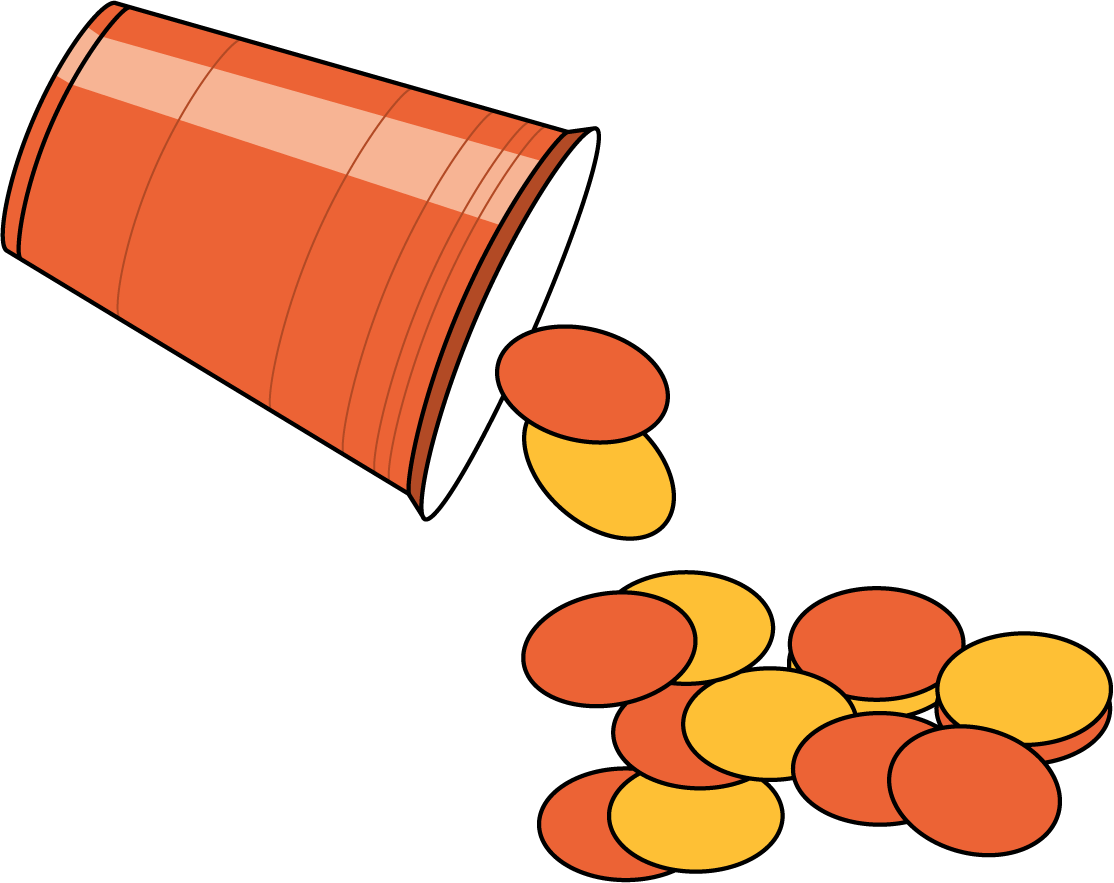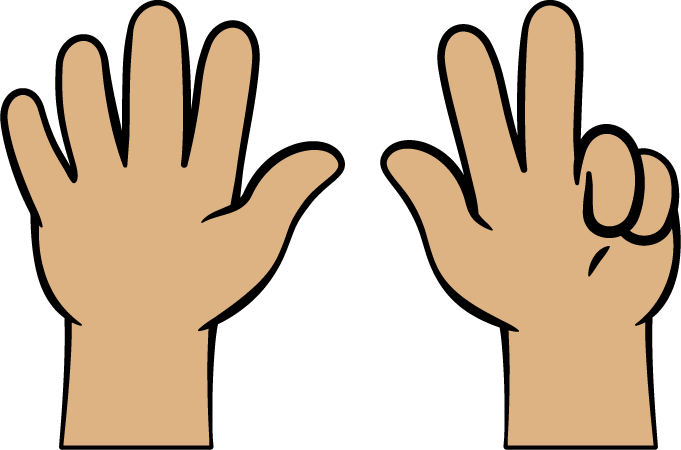Lesson 2
Count and Arrange
Warm-up: Choral Count: Fingers and Numbers (10 minutes)
Narrative
The purpose of this warm-up is for students to practice the verbal count sequence to 10 and show quantities with their fingers.
Launch
- Groups of 2
- “As I count to 10, put up 1 finger as I say each number.”
- Count to 10 as students put up their fingers.
Activity
- “Now let’s count to 10 with our fingers. Each time you say a number, put up 1 finger.”
- Count to 10 as a class using fingers 2–3 times.
- “As you count and put up your fingers, I will write the numbers.”
- Write numbers 1–10 as students count and put up their fingers.
Student Response
For access, consult one of our IM Certified Partners.
Activity Synthesis
- “Work with your partner to count to 10. One partner says the numbers from 1 to 10 while the other partner puts up their fingers.”
- Switch roles.
Activity 1: Count, Rearrange, Count (10 minutes)
Narrative
The purpose of this activity is for students to notice that the arrangement of a group of objects does not change the number of objects. Students grab a handful of connecting cubes and count to see how many they have. They then rearrange the connecting cubes using a 5-frame and discover that although the connecting cubes are arranged differently, the number of connecting cubes stays the same. This understanding develops over time with repeated experience working with quantities in many different arrangements. Students may continue to recount the objects in this and future lessons until they understand and are confident that the number of objects remains the same when they are rearranged.
Advances: Speaking, Representing
Required Materials
Materials to Gather
Launch
- Groups of 2
- Give each group of students connecting cubes.
- “We are going to play a game with our connecting cubes and 5-frame.”
- “One person will grab a handful of connecting cubes and figure out and tell their partner how many there are.”
- “Then the other partner will organize the connecting cubes using the 5-frame, and figure out and tell their partner how many there are.”
- “Take turns playing with your partner.”
Activity
- 5 minutes: partner work time
- Monitor for students who notice that the number of objects is the same after they are rearranged.
Student Facing

Student Response
For access, consult one of our IM Certified Partners.
Activity Synthesis
- Display 6 connecting cubes.
- “How can I figure out how many connecting cubes there are?” (You can count them. You can put them in a line and count them.)
- Demonstrate or invite a student to demonstrate counting the connecting cubes.
- “Tell your partner how many connecting cubes there are.” (There are 6 connecting cubes.)
- Rearrange the connecting cubes on the 5-frame, putting each cube in a square and one cube under the 5-frame, as pictured:

- “How can I figure out how many connecting cubes there are?” (There are still 6, you just moved them around. You can count them.)
- Invite a student to explain how they know that there are still 6 connecting cubes without counting them again.
- If needed, invite a student to count the connecting cubes.
- “There are still 6 connecting cubes. We moved them around, but there are still the same number of connecting cubes.”
Activity 2: Introduce Shake and Spill, Count (10 minutes)
Narrative
The purpose of this activity is for students to learn stage 1 of the Shake and Spill center. Students shake and spill 6–10 counters. Because the counters will be scattered when they are spilled, students will likely rearrange the counters to make them easier to count. Both partners count the counters, which allows them to confirm that they have counted accurately. As students shake and spill the same number of counters multiple times, they notice that the number stays the same each time. After multiple rounds, students may not need to recount the counters to state how many there are. When students notice a pattern or repetitive action in computation, they look for and express regularity in repeated reasoning (MP8).
Supports accessibility for: Memory, Organization
Required Materials
Materials to Gather
Required Preparation
- Each group of 2 needs 10 two-color counters and 1 cup.
Launch
- Groups of 2
- Give each group 1 cup and 10 two-color counters. Give students access to 5-frames.
- “We are going to learn a new center called Shake and Spill. Let's play a round together.”
- “Choose who will go first and start with all of the counters in the cup. Shake the cup and spill the counters on the table.”
- 30 seconds: partner work time
- “Take turns figuring out how many counters there are. When you know how many counters there are, tell your partner and see if you both agree.”
- 1 minute: partner work time
- “Put the counters back into the cup, shake them and spill them again. Take turns figuring out how many counters there are and share with your partner.”
- 1 minute: partner work time
- “Now you can take turns playing with your partner. Take some of the counters out of the cup and put them away so that you are using a different number of counters this time. Remember to spill the counters, figure out how many there are, spill the counters again, and figure out how many there are.”
Activity
- 5 minutes: partner work time
Student Response
For access, consult one of our IM Certified Partners.
Advancing Student Thinking
If students count some counters more than one time or do not count some counters, consider asking:
- “Which counters have you counted already? How do you know?”
- “How can you keep track of the counters that you've counted so that you count each counter one time?”
Activity Synthesis
- Display 7 counters.
- “Han counted 7 counters. Han’s partner put the same counters back in the cup and shook them up. He spilled them out and counted them. How many counters do you think Han’s partner counted?” (7. They are the same 7 counters even if they look different.)
- If needed, demonstrate or invite a student to place the 7 counters in a cup, spill them, and count them.
Activity 3: Centers: Choice Time (25 minutes)
Narrative
The purpose of this activity is for students to choose from activities that offer practice with number and counting concepts.
Students choose from any stage of previously introduced centers.
- Shake and Spill
- Math Fingers
- Pattern Blocks
- Picture Books
Required Materials
Materials to Gather
Required Preparation
- Gather materials from:
- Shake and Spill, Stage 1
- Math Fingers, Stage 1
- Pattern Blocks, Stages 1-3
- Picture Books, Stages 1 and 2
Launch
- “Today we are going to choose from centers we have already learned. You can also choose to keep playing Shake and Spill.”
- Display the center choices in the student book.
- “Think about what you would like to do first.”
- 30 seconds: quiet think time
Activity
- Invite students to work at the center of their choice.
- 10 minutes: center work time
- “Choose what you would like to do next.”
- 10 minutes: center work time
Student Facing
Choose a center.
Shake and Spill

Math Fingers

Pattern Blocks

Picture Books

Activity Synthesis
- “While you played Shake and Spill, did you and your partner get the same number when you both counted the counters? Why or why not?” (We got the same number. We both counted all of the counters one time.)
Lesson Synthesis
Lesson Synthesis
Display 7 objects in a line.
“How many objects are there?”
Invite a student to count the objects or point to each object as the class counts.
Arrange the same 7 objects on a 5-frame, with the 2 additional objects arranged under the 5-frame, as show in this image:

“How can we figure out how many objects there are?” (There are still 7 because they are the same objects. We can count them.)
Invite a student to count the objects or point to each object as the class counts.
“There are still 7 objects. We rearranged the objects, but there are still 7.”
Cool-down: Unit 2, Section A Checkpoint (0 minutes)
Cool-Down
For access, consult one of our IM Certified Partners.